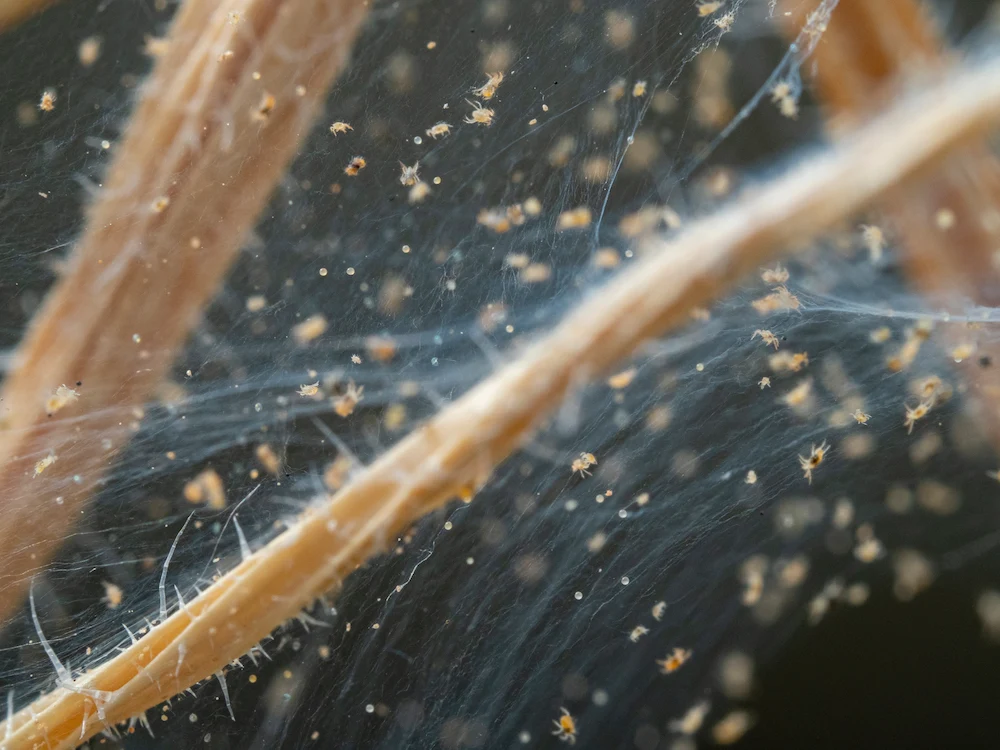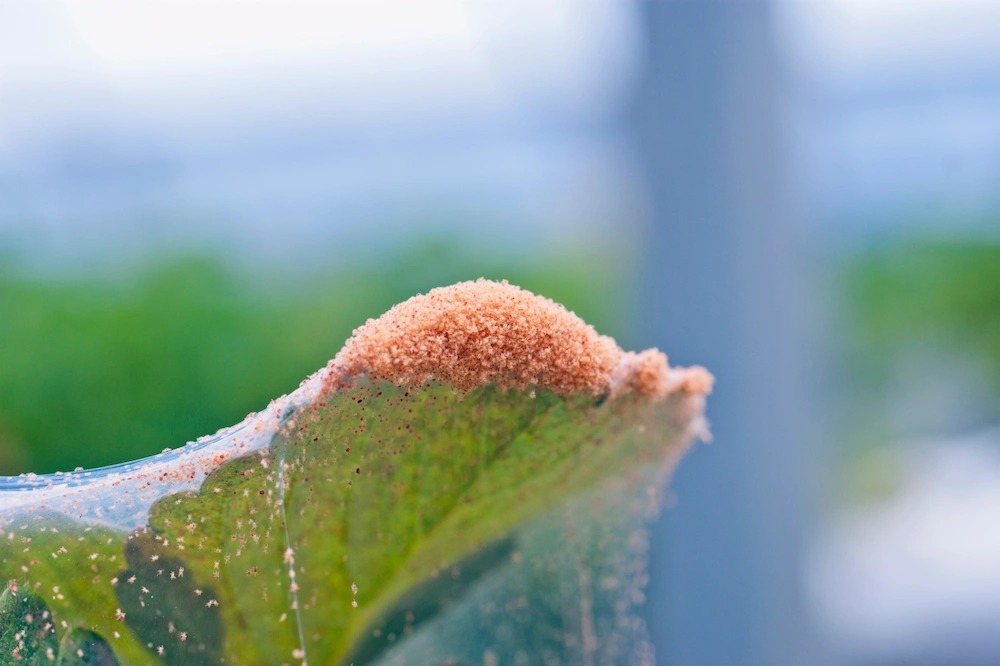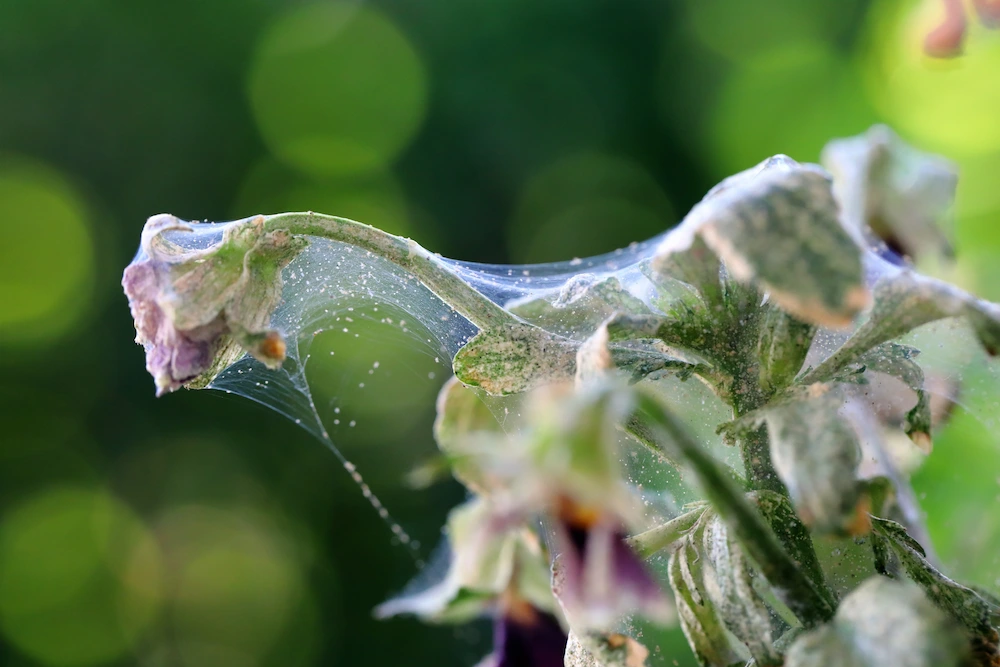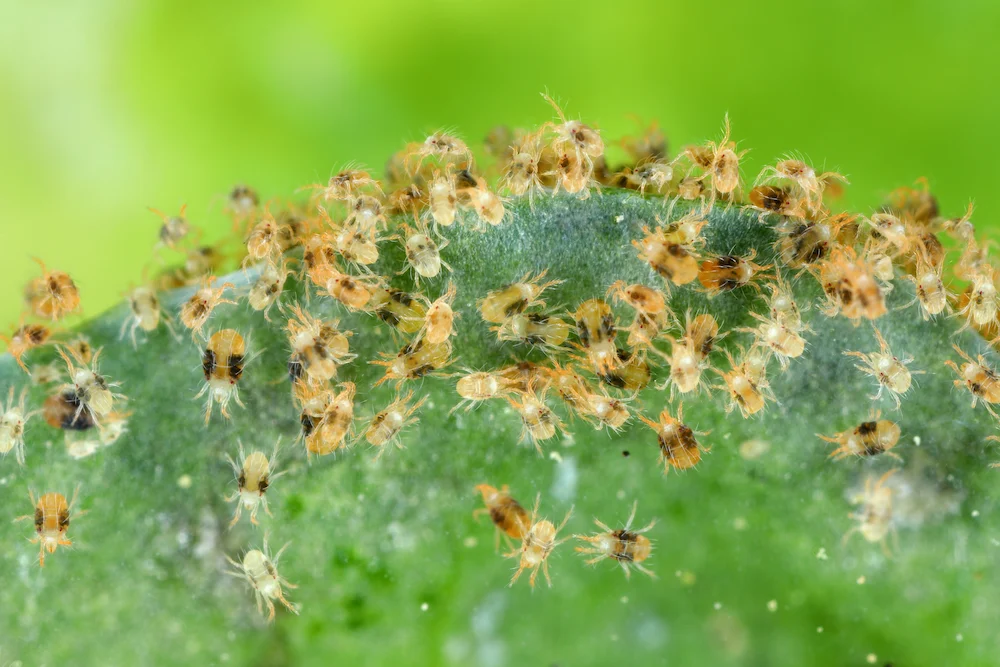Summary: Spider mites are one of the worst garden pests, despite their tiny size. This blog details the lives of spider mites, including their basics, diets, habits, and life cycles. Romney Pest Control provides targeted solutions for many kinds of Texas pest problems.
No pest is a fun guest, but the sector of pests that go unnoticed until after they start causing damage are even more frustrating. Termites, bed bugs, and carpenter bees fall under this category. As a whole, garden pests usually fall under the radar until their destructive feeding starts killing our plants and lawns.
There’s a lot we can say about garden pests, but our focus is on one of the most elusive critters in the bunch. Spider mites are tiny pests that deliver damage 10 times their size. Trust us, you don’t want spider mites using your yard as their personal buffet.
Let’s explore the world of the small yet mighty spider mites to learn about their true risks before we dish on the best ways to prevent them.
The Basics

First things first, we need to establish the basics of these insatiable pests. They’re one of the worst summer pests because they thrive in hot and dry conditions. The two-spotted spider mite is the most common species in Texas, so we’ll be focusing on it for the purposes of this blog.
Two-spotted spider mites are:
- 1/32 inch (or less) long
- Round-bodied
- 8-legged
- Red, yellow, or green in color
- Peppered with dark spots
- Able to produce thin, silk webbing on plants
An Efficient Life Cycle

Spider mites protect their eggs by placing them in their silk webbing underneath their inhabited leaves. The young mites molt a few times in their nymph stage, then mate soon after their final molt. All in all, these pests take anywhere from 5 to 20 days to grow into adults. Higher temperatures speed up the process.
Since they take just 1 to 2 weeks to gain the ability of reproduction, spider mites multiply like nobody’s business. It’s common for an infestation to number in the thousands in the span of a few weeks. The more food (aka plant cells) they have available, the more energy spider mites have to grow their numbers.
A Juicy Diet

Speaking of food, spider mites only eat the sugary juice that comes from plant cells. They use their sharp mouthparts to pierce plant cells and drink the contents. Their constant feeding damages more and more cell clusters, gradually weakening the plant.
These pests don’t need much to survive since they’re tiny, so any damage is the result of their large numbers. One spider mite doesn’t do much, but two thousand of them? They’ll ruin a plant in no time flat.
It’s also important to note that spider mites are social creatures. You won’t see (for a few reasons) a spider mite living alone on a leaf. Instead, the horde of spider mites concentrates their feeding on the leaf’s veins to get the most juice. The damage spreads outward as the mites multiply and continue feeding.
The Targeted Plants

Spider mites often target plants that are already stressed. Plants with pre-existing stress or damage are more vulnerable to pest invasions since they don’t have the strength to fight back. In large numbers, spider mites can be disastrous for crops. For example, they can reduce cotton yield by defoliating the plants!
Any stressed plant, bush, or tree is vulnerable to spider mites. That being said, their favorite plants include:
- Cotton
- Grains
- Beans
- Blackberries
- Tomatoes
- Vegetables
- Ornamentals
- Marigolds
- Pansies
- Roses
- Violets
- Cypress
- Junipers
- Verbenas
- Shrubs
- Houseplants
Why Should We Be Concerned?

If these pests are so small and common, why should we be worried about them? After all, aren’t there worse garden pests out there?
Sure, there are plenty of other destructive garden pests to watch for (ahem, aphids). But their presence doesn’t cancel out the damage of spider mites. Like we mentioned before, it’s nearly impossible to find spider mites until they already ruined a plant or two.
Spider mite-infested leaves gradually gain yellow or bronze specks as they lose chlorophyl. Leaves with severe damage will fall off entirely, which happens more often on stressed plants. It’s difficult to save a plant that’s been drained of its vital juice, so a prolonged infestation can lead to the premature death of a plant.
You may have noticed we said “a plant or two” earlier (cue the “rewind” sound effect). That’s because spider mites spread to other plants by producing enough silk to float — or “balloon” — to nearby plants. When the plant they originally invaded is too dry for their liking, they move on to the next one.
So, compared to other pests that invade our homes, spider mites aren’t the worst of the bunch. But they are a destructive presence in Texas yards and gardens every summer. Remember: the warmer the weather, the faster spider mites reproduce. That’s why it’s important to prevent these pests from ruining your greenery before they have the chance.
How to Prevent Spider Mites

Since spider mites are so small — have we mentioned this enough times for your liking? — that prevention is more intentional than it is for larger pests. If you do find spider mites in your yard or garden, don’t panic! They’re easily removed from any plant or tree they inhabit.
The best ways to prevent spider mites are:
- Inspect New Plants — You don’t want to introduce a new pest problem by buying an infested plant! Before bringing home a new plant or tree, inspect it for signs of damage or an infestation.
- Water Plants Consistently — Spider mites target stressed plants, so make sure your plants and lawn get the right amount of water for their needs. Also, never underestimate the impact of good soil!
- Look for the Signs — In every season, it’s a good idea to keep an eye out for the signs of spider mites. Check your plants for yellow or bronze specks, dropped leaves, and dusty or grimy-looking leaves.
- Check for Spider Mites — If you think a plant has spider mites, there’s an easy way to tell! Place a white paper under the plant and shake the leaves. You’ll be able to see tiny mites crawling on the paper, which gives you your answer.
On that note, the easiest ways to eliminate spider mites are:
- Isolate the Infested Plants — If the infested plant is in a pot or other container, move it away from other plants and trees until the spider mites are removed. If the plant is in the ground, try the next method.
- Use the Hose — A spider mite invasion is nothing a good blast from the hose can’t solve! Use a power nozzle to spray the plant with quick bursts of water, concentrating it on the underside of the leaves.
- Remove Their Webs — One of the earliest signs of spider mites is their thin webbing. Use a damp rag or paper towel to carefully remove their webs from the infested plant. By removing the webs, you also remove a lot of spider mites.
- Utilize Natural Enemies — Spider mites have natural enemies in other critters, so don’t be afraid to let these beneficial insects stay in your garden! The most common include lacewings, ladybugs, and various larvae.
Beat the Heat with Romney Pest Control
With the warmest season just around the corner, it’s time to start gearing up for summer pest prevention. The experienced technicians of Romney Pest Control provide targeted solutions for even the toughest of Texas pest problems. We create a customized treatment plan for each customer that takes the property layout and pest-heavy areas into account.
Cold-blooded insects and spiders will only get more active as the temperatures rise. Save your spring and summer with Romney’s preventative solutions, and contact us for a free quote today!
Citations
Hildebrandt, C. (2022, May 18). How to deal with spider mites in west Texas. Hildebrandt Tree Tech. Available at https://mytreetech.com/blog/how-to-deal-with-spider-mites-in-west-texas/ (Accessed on April 29, 2025).
Spider mite. (n.d.). Texas A&M AgriLife Extension. Retrieved April 29, 2025, from https://texasinsects.tamu.edu/spider-mite/
Spider mite treatment in Fort Worth, Texas. (2021, June 29). TreeNewal. Retrieved April 29, 2025, from https://treenewal.com/spider-mite-treatment-in-fort-worth-texas/




